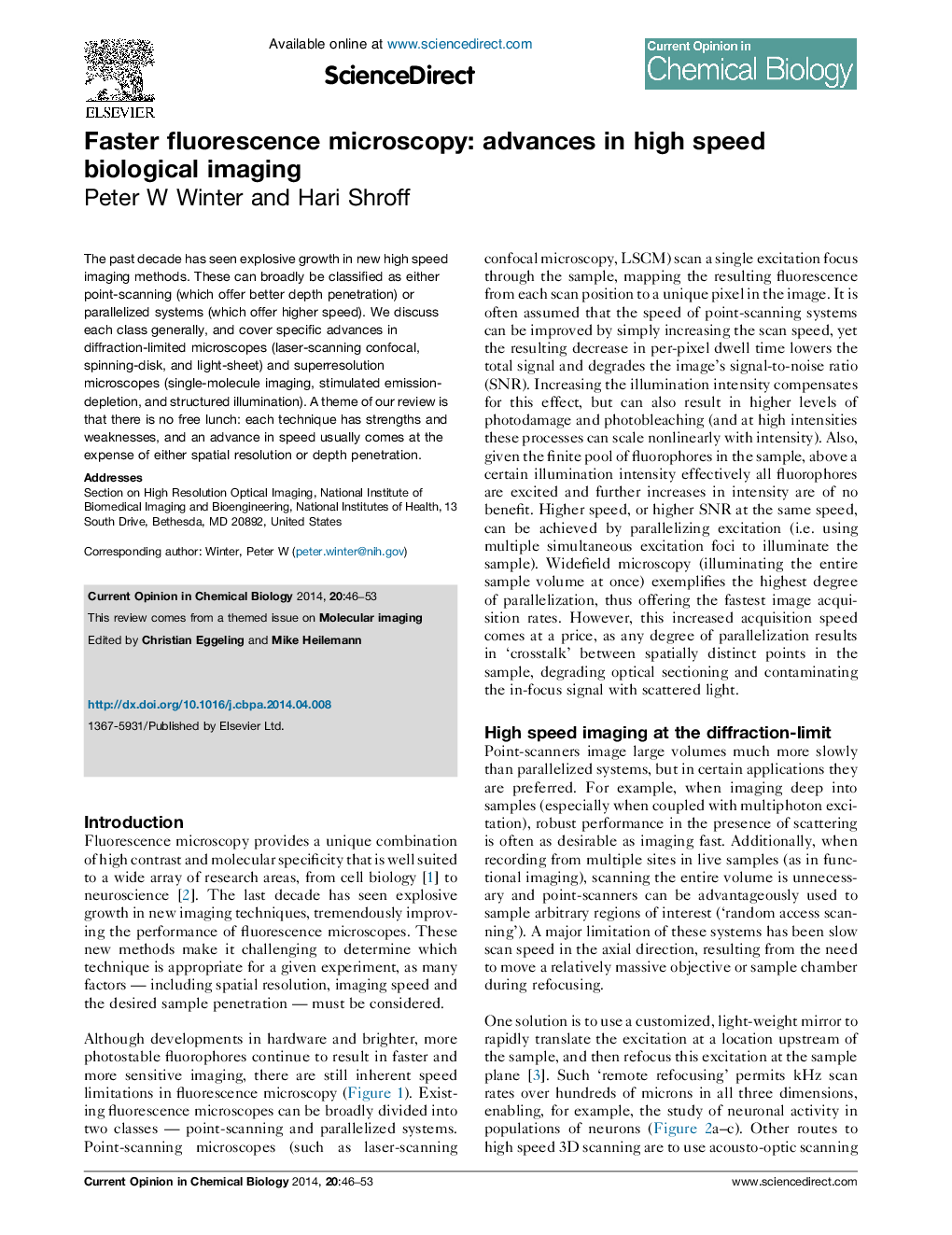| Article ID | Journal | Published Year | Pages | File Type |
|---|---|---|---|---|
| 7694836 | Current Opinion in Chemical Biology | 2014 | 8 Pages |
Abstract
The past decade has seen explosive growth in new high speed imaging methods. These can broadly be classified as either point-scanning (which offer better depth penetration) or parallelized systems (which offer higher speed). We discuss each class generally, and cover specific advances in diffraction-limited microscopes (laser-scanning confocal, spinning-disk, and light-sheet) and superresolution microscopes (single-molecule imaging, stimulated emission-depletion, and structured illumination). A theme of our review is that there is no free lunch: each technique has strengths and weaknesses, and an advance in speed usually comes at the expense of either spatial resolution or depth penetration.
Related Topics
Physical Sciences and Engineering
Chemistry
Chemistry (General)
Authors
Peter W Winter, Hari Shroff,
